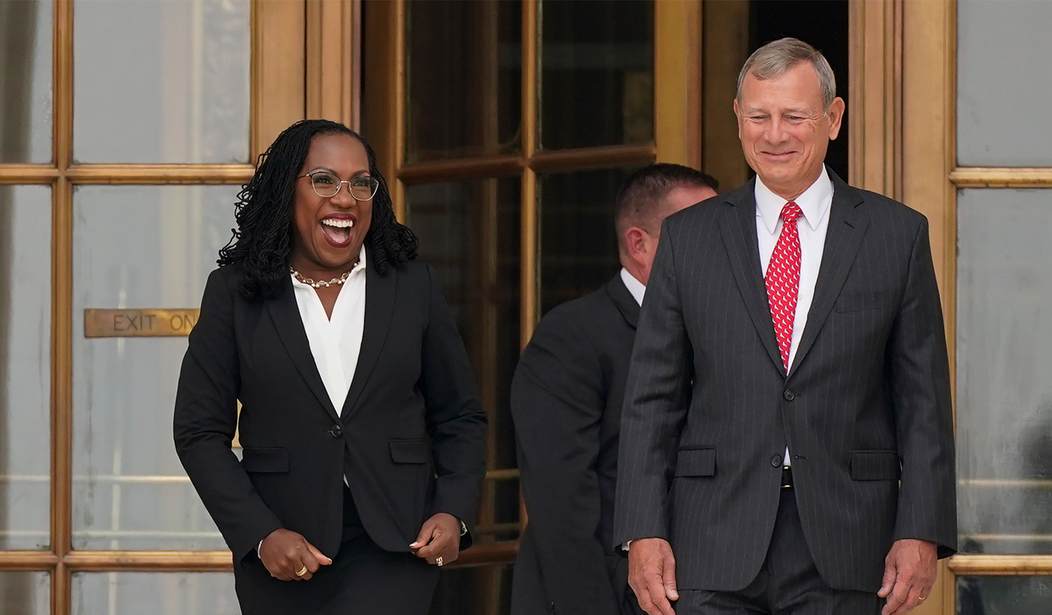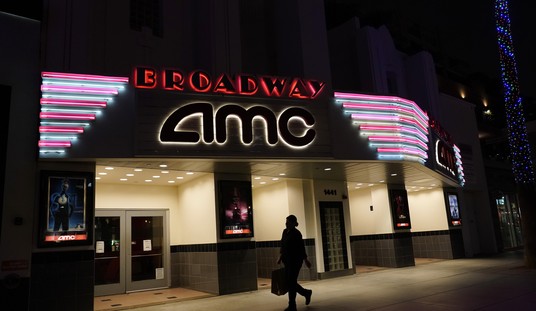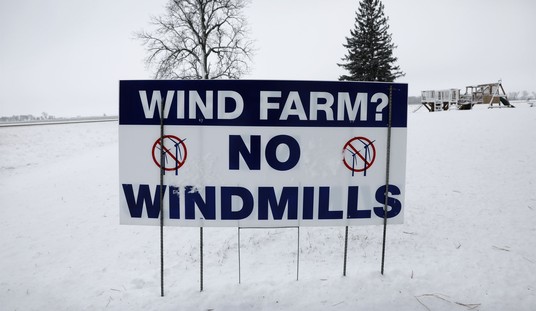A harbinger of Supreme Court decisions to come in this term? Or just an example of overreach by Alabama Republicans? One way or the other, the “surprising” 5-4 decision in Allen v Milligan has Democrats singing the praises of the Supreme Court for today, at least.
The decision authored by Chief Justice John Roberts and joined by Brett Kavanaugh and all three liberal justices rejects an attempt to redefine the Voting Rights Act Section 2 with a new “race neutral” model. As the Associated Press notes, the “surprise” was that the court allowed the legislative map in question for the 2022 election while considering the challenge, which most took as a sign that the plaintiffs would lose:
Chief Justice John Roberts and Justice Brett Kavanaugh joined with the court’s liberals in affirming a lower-court ruling that found a likely violation of the Voting Rights Act in an Alabama congressional map with one majority Black seat out of seven congressional districts in a state where more than one in four residents is Black. The state now will have to draw a new map for next year’s elections.
The decision was closely watched for its potential effect on control of the closely divided U.S. House of Representatives. Because of the ruling, Republican-led legislatures in Alabama and Louisiana will have to redraw maps so that they could increase Black representation.
The outcome was unexpected in that the court had allowed the challenged Alabama map to be used for the 2022 elections — and in arguments last October the justices appeared willing to make it harder to challenge redistricting plans as racially discriminatory under the Voting Rights Act of 1965.
Clearly at least Roberts changed his mind. He had himself signaled a skepticism about the existing Section 2 test (Gingles) and an openness to reconsidering it. In the decision syllabus, however, Roberts reverts to Gingles and over 40 years of its controlling precedent. If the court got it wrong in Gingles, Roberts writes in the syllabus, Congress has had plenty of time to amend Section 2 to impose a different test:
Alabama’s understanding of §2 would require abandoning four decades of the Court’s §2 precedents. The Court has unanimously held that §2 and the Gingles framework apply to claims challenging single-member districts. Growe v. Emison, 507 U. S. 25, 40. As Congress is undoubtedly aware of the Court’s construction of §2 to apply to districting challenges, statutory stare decisis counsels staying the course until and unless Congress acts. In any event, the statutory text supports the conclusion that §2 applies to single-member districts. Indeed, the contentious debates in Congress about proportionality would have made little sense if §2’s coverage was as limited as Alabama contends.
The Court similarly rejects Alabama’s argument that §2 as applied
to redistricting is unconstitutional under the Fifteenth Amendment.
The Court held over 40 years ago “that, even if §1 of the [Fifteenth]
Amendment prohibits only purposeful discrimination,” City of Rome v.
United States, 446 U. S. 156, 173, the VRA’s “ban on electoral changes
that are discriminatory in effect is an appropriate method of promoting
the purposes of the Fifteenth Amendment,” id., at 177. Alabama’s contention that the Fifteenth Amendment does not authorize race-based
redistricting as a remedy for §2 violations similarly fails. The Court is
not persuaded by Alabama’s arguments that §2 as interpreted in Gingles exceeds the remedial authority of Congress.
The other four conservative justices, led by Clarence Thomas, strongly disagree. Thomas argues that manipulating districts for race-based outcomes is unconstitutional on its face:
These cases “are yet another installment in the ‘disastrous misadventure’ of this Court’s voting rights jurisprudence.” Alabama Legislative Black Caucus v. Alabama, 575 U. S. 254, 294 (2015) (THOMAS, J., dissenting) (quoting Holder v. Hall, 512 U. S. 874, 893 (1994) (THOMAS, J., concurring in judgment)). What distinguishes them is the uncommon clarity with which they lay bare the gulf between our “color-blind” Constitution, Plessy v. Ferguson, 163 U. S. 537, 559 (1896) (Harlan, J., dissenting), and “the consciously segregated districting system currently being constructed in the name of the Voting Rights Act.” Holder, 512 U. S., at 907 (opinion of THOMAS, J.). The question presented is whether §2 of the Act, as amended, requires the State of Alabama to intentionally redraw its longstanding congressional districts so that black voters can control a number of seats roughly proportional to the black share of the State’s population. Section 2 demands no such thing, and, if it did, the Constitution would not permit it.
That argument is over, for now. The question is what happens next. Alabama (and Louisiana, which had a related case combined with Allen v Milligan) will have to redraw their legislative districts before next year and have them pass muster with the federal court. Normally that wouldn’t be a national issue, but the GOP won a veeeeerrrrry slender four-seat majority with these two Republican maps in place. Any changes to redistricting in the next election has the potential to allow Democrats to eat into or eliminate the GOP advantage.
That risk is somewhat overblown, however. In a presidential election cycle, the winning party would be likely to flip more seats than the changes to two state congressional maps would put at risk. Joe Biden actually lost House seats in his 2020 election, the first time that a new president had done so in long memory, if ever. For the most part, a winning president will pick up seats in the House. Republicans’ best bet, even apart from the Supreme Court decision in Allen v Milligan, is to win the presidency — and win it with a candidate who doesn’t turn off down-ballot voters, and even more with a candidate who doesn’t drive down-ballot turnout among Democrats. The new maps in Alabama and Louisiana will almost certainly be afterthoughts in the national conversation.
In the shorter run, one has to wonder what this decision says about the Supreme Court’s review in another set of cases relating to affirmative action. In those two cases involving Harvard and the University of North Carolina, plaintiffs also wanted the court to apply a new standard to racial tests for school admissions. The court seemed sympathetic to that argument when the cases were argued in October, but then again, the court didn’t just seem sympathetic in Allen v Milligan but let the maps stand for an election before deciding.
It could be that Roberts and Kavanaugh are calculating that a split decision this term that keeps the Voting Rights Act status quo while delivering on a long-promised rethink of affirmative action will work best for the court. Maybe. We’ll see soon enough.








Join the conversation as a VIP Member